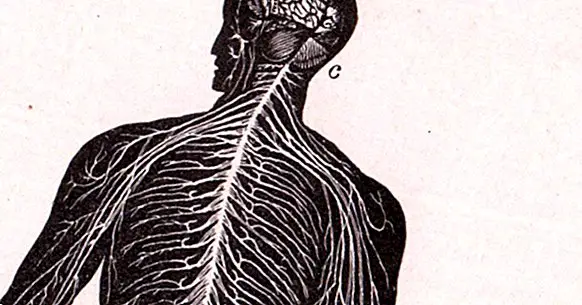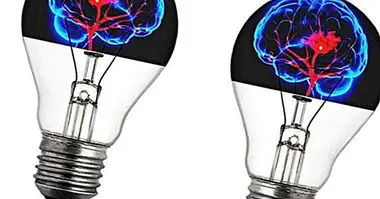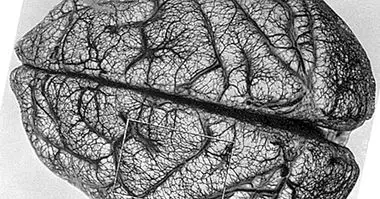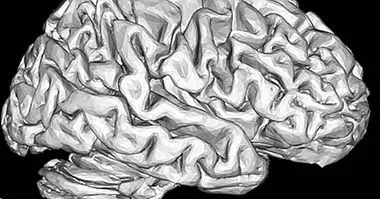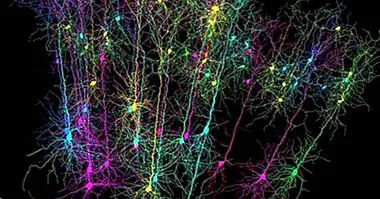Nociceptors (pain receptors): definition and types
We call "nociceptor" the endings of cells that detect pain sensations and transmit them to other areas of the central nervous system. The different types of nociceptor respond to mechanical, thermal or chemical stimuli, both external and caused by the organism itself.
In this article we will describe What are the nociceptors and how do the 5 main types differ? . We will also briefly explain how the experience of pain works at the level of the spinal cord and the brain, and the ways in which it can be inhibited.
- Maybe you are interested: "Chronic pain: what it is and how it is treated from Psychology"
What are nociceptors? A definition
Nociceptors are sensory receptors that respond to stimuli that injure the tissues or that could do so, and they are located at the end of the axon of a sensory neuron. This response, known as nociception, consists of the emission of pain signals to the central nervous system, that is, to the brain and spinal cord.
The nociceptors are located in different parts of the body, both in external and internal tissues. A) Yes, the sensation of pain does not only occur in the skin or in the mucous membranes, but also in the muscles, the intestine or the bladder.
Activation of nociceptors can occur through the direct stimulation of tissues or indirectly, by the release of chemicals in damaged tissue. These compounds include histamine, bradykinin , potassium, serotonin, acetylcholine, substance P and ATP.
The axons of the nociceptors can be of two types: A delta fibers (Aδ) and C fibers. The first ones are myelinated, so the action potentials are transmitted with great speed through these fibers. For its part, C fibers are much slower because these axons contain a lower amount of myelin.
Types of nociceptor
The transmission of nociceptive signals is triggered when tissues detect different types of injury stimulation, such as compression or intense heat.
We can divide the nociceptors depending on the kinds of stimuli to which they respond , although some of them react to several sensory modalities.
1. Mechanics (mechanoreceptors)
Mechanical nociceptors are activated from intense tactile sensations, such as punctures, pressure or deformation; therefore, they respond to cuts and blows. Its frequency of response is greater the more harmful the stimulus results.
This type of nociception leads to very fast responses because the mechanical receptors transmit afferences through A delta fibers, myelinated nerves of fast conduction .
- Related article: "Myelin: definition, functions and characteristics"
2. Thermal (thermoreceptors)
The conduction from the thermal nociceptors also takes place through A delta fibers and therefore they are transmitted at a high speed.
These nociceptors are activated when they detect very high or very low temperatures (more than 42ºC or less than 5ºC) , as well as intense mechanical stimuli.
3. Chemicals (chemoreceptors)
Chemical nociceptors respond to different Chemical compounds that tissues release when damaged , such as bradykinin and histamine. They also detect the presence of external toxic substances that can cause tissue damage, such as hot pepper capsaicin and tobacco acrolein.
4. Silent
This kind of nociceptor is not characterized by the type of stimulus that activates it, but by the fact that it responds late, once it has occurred inflammation of the tissue adjacent to the lesion .
5. Polimodales
Polymodal nociceptors respond to different types of stimulation: mechanical, thermal and chemical. They drive the pain signals through C fibers, significantly slower than the A fibers. We can find this type of nociceptors in the dental pulp, among other parts of the body.
The pathways of pain and its inhibition
Different spinal tracts transmit pain signals from the nociceptors to the cerebral cortex. In particular, the relevance of the spinothalamic tract , which connects the skin with the thalamus, a key structure in sending sensory inputs to the brain.
The nociceptive fibers are located in the dorsal (or posterior) horn of the spinal cord and are composed, as we have said, of A delta fibers and C fibers, as well as of projection neurons and inhibitory interneurons.
There are three components of the pain experience: the sensation, the emotion and the cognition . The primary and secondary somatosensory cortex process the discriminative-sensory dimension, while the associated negative emotion depends on the insula and the anterior cingulate. The feeling of long-term pain is related to the prefrontal cortex.
The theory of the gate of Melzack and Wall proposes that the perception of non-painful stimuli blocks the transmission of pain signals to the central nervous system; thus, the experience of pain can be canceled if tactile sensations do not harm. Therapy by transcutaneous electrical stimulation It is based on this theory.
The inhibition of pain can also occur downward, from the brain to nociceptive neurons. In this sense, the endorphins of the periaqueductal gray matter, the serotonin secreted by the raphe nuclei and the norepinephrine of the cerulean locus are of great importance.

